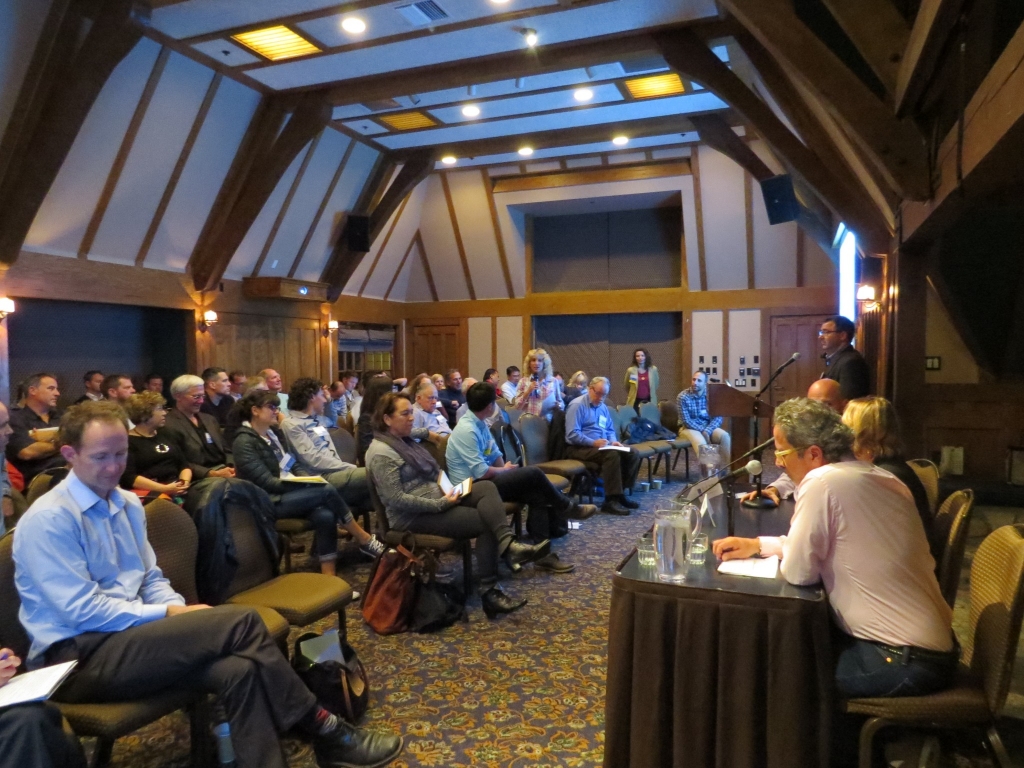Sunday night’s panel, “Cap and Trade and the Implications of Stop-And-Go Transportation Funding,” provided a crash course on one of the state’s most innovative funding mechanisms for public transit. Ever since California passed AB32 in 2006, the state’s greenhouse-gas reduction mandates have been some of the strictest in the nation, setting the goal of reducing GHG levels to 1990 levels by 2020, and then reducing them again by 80% by the year 2050. The state-run Cap and Trade program has been a highly publicized part of this process, and because a certain portion of C&T funding is set aside to fund low-carbon transportation, a panel of environmental experts got together to discuss the program’s successes and failures.
JR DeShazo of UCLA’s Luskin Center for Innovation explained the basic structure of the state’s Cap and Trade program: A business needs a permit to emit a ton of carbon, and there is an overall statewide cap on the number of permits that can be issued. These permits are then auctioned off to businesses around the state, and the revenues go toward the Greenhouse Gas Reduction Fund, which funds Sustainable Transportation initiatives, Sustainable Energy initiative, and a “grab bag” of state and local programs. According to DeShazo, this innovative combination of environmental planning and public finance may have been too successful: After 4 years of constantly growing revenues, this year revenues have gone down sharply.
In a sense, this is a good thing for California: It means businesses are polluting less. But when local transportation agencies depend on Cap and Trade revenue for funds, the following speakers explained, it can lead to uncertainty and stress about funding capital and operations plans. Ann Mayer of the Riverside County Transportation Commission explained the local context she deals with: a fast-growing, geographically huge county with a low rate of jobs to housing. As a result, she said, local voters are often skeptical of transit improvements and are reluctant to do things like approve new tolls or levy new sales taxes, as other California counties have. Less money from the state means a direct hit on her budget for much-needed improvements.
The final speaker was Assemblymember Richard Bloom, who represents Santa Monica in Sacramento and brought the much-needed perspective of an elected official. As the Chair of the Budget Subcommittee on Resources and Transportation, Bloom admitted that the dropoff in Cap and Trade revenues has taken many in Sacramento by surprise. But he also pointed out that at the program’s inception, it was meant to help get cash-strapped cities through the Great Recession, not represent a stable, permanent source of funding. Like DeShazo, Bloom expressed the view that permanently high revenues from Cap and Trade should not be the state’s aim, saying, “We would rather not have the money; we’d rather have less pollution. That is the real goal here.” A permanently sustainable stream of transportation funding, he warned, would only come when the governor and state legislature step up to the plate to ensure new sources of revenue.
